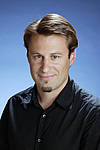The Project
Bioengineering micro-arrayed stem cell niches
Winner

Dr. Matthias Lutolf
Institute of Bioengineering
Bldg. AI 3138, Station 15
Ecole Polytechnique Fédérale de Lausanne (EPFL)
1015 Lausanne
Switzerland
http://sv.epfl.ch
Thirty-three year old Swiss researcher Matthias Lutolf is an assistant professor for the Institute of Bioengineering, which is part of the new School of Life Sciences at the Ecole Polytechnique Fédérale de Lausanne (EPFL). Prior to joining the EPFL, Dr. Lutolf has been a ‘Leukemia and Lymphoma Society fellow’ at Stanford University School of Medicine, where he studied the regulation of hematopoietic stem cells, which are the stem cells that form blood.
Lutolf was trained as a Materials Engineer at the Swiss Federal Institute of Technology Zurich (ETH) and was awarded an ETH medal for his outstanding PhD in Biomedical Engineering. He developed a new class of ‘smart’ biomaterials for bone tissue engineering and cell biology. He has a strong publication record in leading bioengineering and biotechnology journals, and is a co-inventor on four internationally issued patents in the field of tissue regeneration and drug delivery.
Project Description
Stem cells, due to their unique properties, hold enormous potential for the treatment of many diseases affecting humans. Despite the extensive research on stem cell regulation, significant hurdles need to be overcome before stem cells can be used for therapy. One of the greatest challenges is controlling stem cell behavior outside of the body as this would, for example, allow expanding them to sufficient numbers for transplantation.
Adult stem cells in the body are found in niches, which are specialized tissue-specific microenvironments. Niches protect stem cells from rapid differentiation and regulate the delicate balance between self-renewal and differentiation. Using bioengineering strategies and innovative tools, Lutolf and his team are working on reconstructing well-defined artificial niches to decipher adult stem cell regulation.
This research will yield unique information regarding the dynamics of stem cell fate and may spawn new strategies for stem cell-based therapies.

